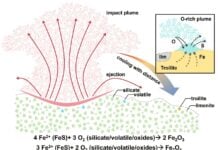A groundbreaking study has identified two naturally occurring molecules – agmatine and thiamine (vitamin B1) – that could revolutionize the detection and treatment of glaucoma, a leading cause of irreversible blindness. Researchers at the University of Missouri have discovered a significant correlation between reduced levels of these molecules in patients with glaucoma, suggesting their potential as early diagnostic biomarkers and therapeutic targets.
The Problem with Glaucoma
Glaucoma is a group of eye diseases characterized by progressive damage to the optic nerve, often linked to elevated pressure within the eye. While current treatments can slow disease progression, there is no cure, and many individuals remain undiagnosed until significant vision loss occurs. The insidious nature of the disease makes early detection critical, but existing methods often fail to identify patients in the initial stages.
The Discovery: Agmatine and Thiamine
The study, led by ophthalmology researcher Pawan Singh, examined the aqueous humor (fluid in the eye) of 19 glaucoma patients and 10 healthy individuals, analyzing 135 different metabolites. The results revealed that agmatine and thiamine were notably reduced in the eyes of those with glaucoma. This reduction suggests that these molecules play a crucial role in maintaining retinal health and protecting against neuroinflammation.
Laboratory Findings
Further experiments on stressed mouse photoreceptor cells confirmed the protective effects of agmatine and thiamine. The molecules were shown to reduce inflammation and prevent cell death, indicating their potential as neuroprotective agents. In animal models, boosting levels of these compounds also reduced retinal inflammation and improved vision.
Implications for Early Detection
The findings open the possibility of developing simple blood tests to identify individuals at risk of glaucoma long before symptoms appear. “If doctors could check for these biomarkers, they could catch the disease much earlier, before vision loss occurs, so patients can receive treatment sooner,” says Singh. This proactive approach could prevent irreversible blindness in countless individuals.
Therapeutic Potential
Beyond diagnosis, agmatine and thiamine may also serve as novel therapeutic targets. Their ability to reduce inflammation and protect retinal ganglion cells suggests they could slow or even reverse nerve damage in glaucoma patients. While human trials are still needed, the laboratory results are highly promising.
The Bigger Picture
Glaucoma affects millions worldwide, and its prevalence is expected to rise with aging populations. Current treatments primarily focus on managing eye pressure, but the underlying neurodegenerative processes remain poorly understood. The discovery of agmatine and thiamine offers a new avenue for research, potentially leading to more effective therapies and earlier interventions.
Future Directions
The researchers emphasize that further studies are necessary to confirm their findings in larger human cohorts. Clinical trials will be crucial to determine the optimal dosage and delivery methods for agmatine and thiamine in glaucoma treatment. The long-term goal is to develop a non-invasive diagnostic tool and a preventative strategy that can halt the progression of this debilitating disease






































